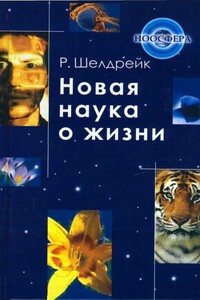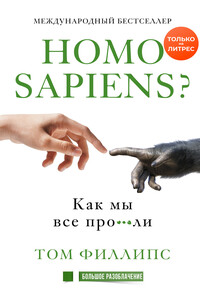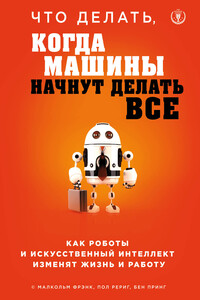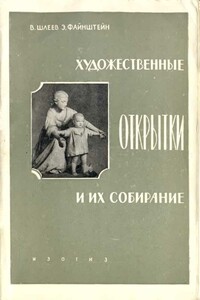Семь экспериментов, которые изменят мир - страница 128
1998. The sense of being stared at: Experiments in schools. Journal of the Society for Psychica Research, 62:311–323.
1999. Commentary on a paper by Wiseman, Smith, and Milton on the «psychic pet» phenomenon. Journa of the Society for Psychical Research, 63:306–311.
1999. Dogs That Know When Their Owners Are Coming Home, and Other Unexplained Powers of Animals. London: Hutchinson.
1999. How widely is blind assessment used in scientific research? Alternative Therapies, 5:88–91.
1999. The sense of being stared at' confirmed by simple experiments. Biology Forum, 92:53–76.
2000. The «psychic pet» phenomenon. Journal of the Society for Psychical Research, 64:126–128.
March/April 2000. Research on the feeling of being stared at. Skeptical Inquirer, 58–61.
2000. The sense of being stared at does not depend on known sensory clues. Biology Forum, 93:209—224
2001. Experiments on the sense of being stared at: The elimination of possible artifacts. Journal of the Society for Psychical Research, 65:122–137.
Sheldrake, R., С Lawlor, and J. Turney. 1998. Perceptive pets: A survey in London. Biology Forum, 91:57—74
Sheldrake, R., and P. Smart. 1997. Psychic pets: A survey in northwest England. Journal of the Society for Psychical Research, 61: 353–364.
1998. A dog that seems to know when its owner is returning: Preliminary investigations. Journal of the Society for Psychical Research, 62:220–232.
2000. A dog that seems to know when his owner is coming home: Videotaped experiments and ob servations. Journal of Scientific Exploration,14:233–255.
2000. Testing a return-anticipating dog, Kane. Anthrozoos, 13:203–212.
Sherman, R.A., J.C. Arena, C.J. Sherman, and J.L. Ernst. 1989. The mystery of phantom pain: Growing evidence for psychophysiological mechanisms. Biofeedback and Self-Regulation, 14:267–280.
Shreeve, J. June 1993. Touching the phantom. Discover, 35–42.
Simmel, M. L. 1956. Phantoms in patients with leprosy and in elderly digital amputees. American Journal of Psychology, 69:529–545.
Skaite, S.H. 1961. The Study of Ants. London: Longman.
Smith, P. 1989. Animal Talk: Interspecies Telepathic Communication. Point Reyes Station, Calif.: Pegasus Publications.
Sole, R.V., O. Miramontes, and B.C. Goodwin. 1993. Oscillations and chaos in ant societies. Journal of Theoretical Biology, 161:343–357.
Soloman, G.F., and K.M. Schmidt. 1978. A burning issue: Phantom limb pain and psychological preparation of the patient for amputation. Archives of Surgery, 113:185–186.
Spruyt, C.A.M. 1950. De Postduif van A-Z. Gravenhage: Van Stockum.
Stamford, R. G. 1974. An experimentally testable model for spontaneous psi occurrences. Journal of the American Society for Psychical Research, 66:321–356.
Stillings, D. 1983. The phantom leaf revisited: An interview with Allan Detrich. Archaeus, 1:41–51.
Stuart, A.M. 1963. Studies on the communication of alarm in the termite Zootermopsis nevadensis. Physiological Zoology, 36:85–96.
— 1969. Social behavior and communication. In The Biology of Termites, vol. 1, ed. by K. Krishnaand and F.M. Weesner. New York: Academic Press.
Suzuki, D. 1992. Inventing the Future: Reflections on Science, Technology and Nature. London: Adamantine Press.
Thom, R. 1975. Structural Stability and Morphogenesis. Reading, Mass.: Benjamin.
1983. Mathematical Models of Morphogenesis. Chichester: Horwood.
White, I., B. Tursky, and G. Schwartz, ed. 1985. Placebo: Theory, Research and Mechanisms. New York: Guilford Press.
White, R. 1976. The influence of persons other than the experimenter on the subject's scores in psi experiments. Journal of the American Society for Psychical Research, 70:132–166.
Whitehead, A.N. 1933. Adventures of Ideas. Cambridge: Cambridge University Press.
Whyte, L.L. 1979. The Unconscious Before Freud. London: Friedmann.
Wilber, K., ed. 1984. Quantum Questions: Mystical Writings of the World's Great Physicists. Boulder, Colo.: Shambala.
Williams, L. 1983. The feeling of being stared at: A para-psychological investigation. Bachelors thesis, Department of Psychology, University of Adelaide, South Australia. An abstract of this work was published in





